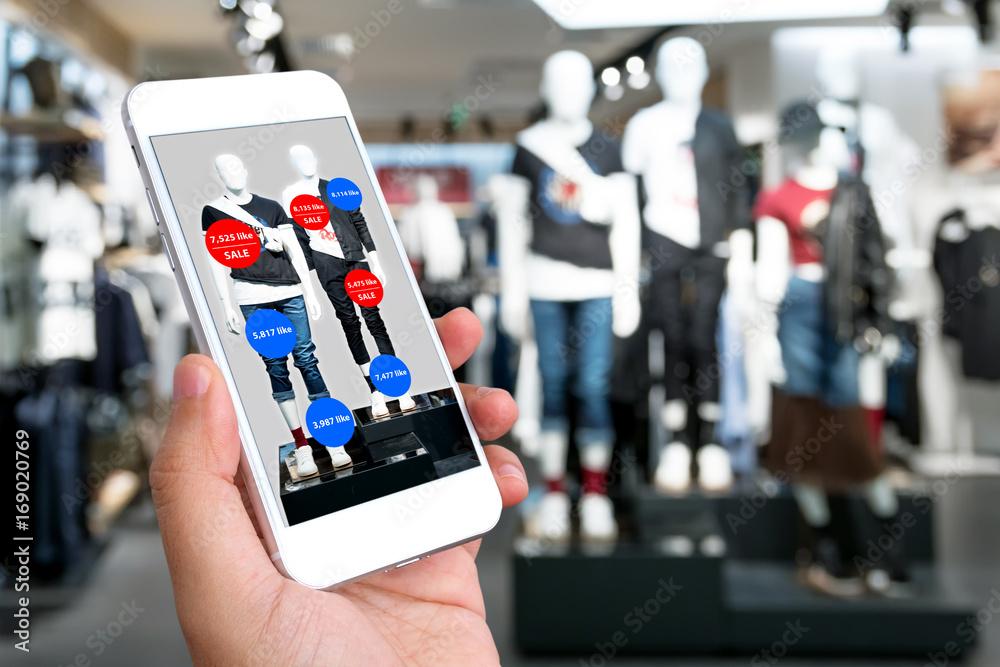Augmented Reality (AR) in Retail Market: Transforming Customer Engagement Through Immersive Shopping Experiences

Augmented Reality (AR) in the retail market has emerged as a transformative force, reshaping how businesses engage with customers and how consumers experience shopping. With the integration of digital content into real-world environments, AR allows retailers to create immersive, interactive experiences that blend the physical and virtual worlds. As technological adoption accelerates and consumer expectations evolve, AR is becoming an essential tool for competitive differentiation in the retail sector.
Market Overview
The AR in retail market is experiencing significant growth, fueled by increasing smartphone penetration, technological advancements, and a shift in consumer preferences toward digital-first shopping experiences. AR enables brands to offer personalized, engaging, and convenient ways for customers to interact with products before purchasing. From virtual try-ons to interactive store layouts, AR applications are redefining the traditional retail landscape.
Retailers across various segments—fashion, furniture, cosmetics, and electronics—are investing in AR technology to enhance customer engagement and increase conversion rates. This investment is not only limited to e-commerce platforms but is also being embraced in physical stores through smart mirrors, AR-enabled kiosks, and mobile applications.
Key Drivers
Several factors are driving the growth of AR in the retail sector:
-
Enhanced Customer Experience: AR provides a more interactive and engaging shopping journey. Shoppers can visualize products in their real environment, such as placing furniture in their living room or trying on glasses virtually, helping to make more confident purchase decisions.
-
Increased Mobile Device Usage: The widespread availability of AR-capable smartphones and tablets has made AR experiences more accessible to the average consumer, removing barriers to entry and enabling broader adoption.
-
Shift to E-Commerce: As online shopping continues to grow, retailers are seeking innovative ways to bridge the sensory gap between digital and physical shopping. AR fills this gap by allowing users to "experience" products virtually.
-
Personalization Trends: Consumers increasingly expect personalized experiences. AR allows for customization in real-time, such as selecting product features or styles, leading to greater satisfaction and loyalty.
Market Segmentation
The AR in retail market can be segmented based on component, device type, application, and region:
-
By Component: Hardware (smart glasses, sensors) and software (AR apps, AR development platforms)
-
By Device Type: Smartphones and tablets, head-mounted displays, smart mirrors
-
By Application: Try-before-you-buy, in-store navigation, virtual fitting rooms, product customization, advertising and marketing
-
By Region: North America, Europe, Asia-Pacific, Latin America, and the Middle East & Africa
Regional Insights
North America currently leads the global AR in retail market, driven by high consumer awareness, robust infrastructure, and early adoption by major retail players. The United States is a major contributor, with brands like Nike, Sephora, and IKEA integrating AR into their shopping platforms.
Europe is also experiencing strong growth, particularly in fashion and automotive retail, where AR is used for virtual showrooms and product demonstrations. Meanwhile, Asia-Pacific is expected to witness the highest growth rate in the coming years due to increasing digitalization, a growing middle class, and rising investment in tech-driven retail experiences.
Competitive Landscape
The market is highly competitive, with established tech companies and innovative startups vying for dominance. Key players include Apple, Google, Microsoft, PTC, Snap Inc., Shopify, and Unity Technologies. These companies are continually enhancing their AR capabilities and partnering with retailers to deliver cutting-edge solutions.
Retail brands are also developing in-house AR solutions or collaborating with AR platform providers to offer unique, branded experiences. Customization and scalability are becoming critical factors in selecting AR technologies.
Challenges and Restraints
Despite its potential, AR adoption in retail faces several challenges:
-
High Initial Investment: Developing and deploying AR solutions can require substantial investment, especially for small and mid-sized retailers.
-
Technology Integration: Integrating AR with existing systems such as inventory management or POS platforms can be complex and time-consuming.
-
User Education and Adoption: Not all consumers are familiar with AR, and businesses must invest in educating users to ensure smooth adoption.
-
Privacy and Data Security: AR experiences often collect user data to personalize content, raising concerns about data privacy and security.
Future Outlook
The future of AR in retail looks promising, with advancements in artificial intelligence, 5G connectivity, and machine learning poised to further enhance AR experiences. As hardware becomes more affordable and AR development platforms more accessible, even small businesses will be able to implement AR into their customer journeys.
The market is expected to continue expanding, with trends pointing toward more seamless omnichannel experiences, AI-driven personalization, and social media integration. Virtual shopping assistants, AR-powered loyalty programs, and real-time analytics will likely play a significant role in the next wave of retail innovation.
Conclusion
Augmented Reality (AR) in the retail market is revolutionizing how consumers shop and how brands interact with their customers. With its ability to enhance engagement, drive conversions, and deliver memorable shopping experiences, AR is no longer a futuristic concept—it is a practical and powerful tool in modern retail. As technology continues to evolve, AR is set to become a cornerstone of the retail industry's digital transformation.
- Art
- Causes
- Crafts
- Dance
- Drinks
- Film
- Fitness
- Food
- الألعاب
- Gardening
- Health
- الرئيسية
- Literature
- Music
- Networking
- أخرى
- Party
- Religion
- Shopping
- Sports
- Theater
- Wellness


